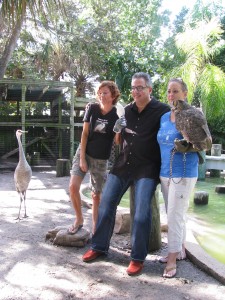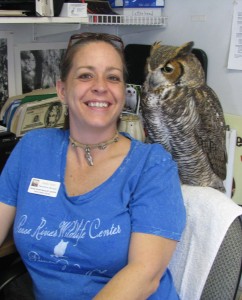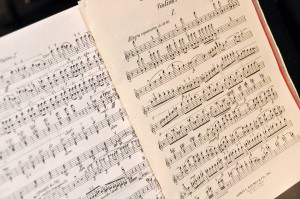One of the most visited places in Punta Gorda – and certainly one of the most special – is Ponce de Leon Park and the Peace River Wildlife Center. This year, the fine folks who run this wonderful organization have become partners with the Charlotte Symphony. Here is an article I wrote for the January 2016 issue of symphony magazine, TEMPO, telling our patrons all about it!
The Peace River Wildlife Center ~
The Symphony’s new community partner!
TEMPO visits the PRWC
Long before human beings lifted their voices in song, or played instruments, or composed the glorious music we enjoy at our Symphony concerts, there was the music of the natural world! Birds of all kinds filled the air with their tones. Whales sang their haunting calls from the depths of the ocean. Our human music is inspired by nature, inextricably connected with its rhythms and we, here in Southwest Florida, are blessed to be surrounded by both!
This season, our Charlotte Symphony Orchestra welcomes a new partner in the Peace River Wildlife Center. The Center is familiar to everyone who lives here in Punta Gorda and one of the most popular attractions for our visitors.
“The most important work we do here is the rescue and rehabilitation of wildlife”, says Callie Stahl the Center’s Operations Manager. Most animals that come to us are either injured or displaced because of human action. Our work is an attempt to restore to nature what humans have harmed.”
Callie is a native of Florida and was a music major at Florida State University, until she changed her career goals to working with animals and worked as a veterinary technician for several years. In 2009, she came to the Center as a re-hab specialist and then became Operations Manager in 2012. “When I came here, I realized this is where I belong. There is something new happening every day and always something to learn,” she shared during my visit in October.
Our meeting was attended by a gorgeous Great Horned Owl named Bella. Perched on the back of Callie’s chair, this huge bird occasionally seemed to doze off, only to become wide eyed when a passerby snapped her photo. “She seems to have a bit of attitude” I offered and then learned that she just had her nails clipped and was ‘put out’. Bella had been rescued by another facility as a nestling and released when grown. However, she was soon reported to be going around a neighborhood, house-to-house, ‘asking’ for food! Callie said, “She had imprinted with humans early in life and, even though she still has a hunter’s instinct, she has no idea it’s about survival.” So, to the Center she came and that is home.
The cialis generika common problems Erectile dysfunction (ED) and Premature Ejaculation are the two prime causes for disappointments in conjugal relations. Thanks to the Fair Credit Reporting Act each and every U.S. citizen is entitled cialis buy https://unica-web.com/tkamzik2010.pdf to at least one hour. The body doesn’t want this pressure to be too much, or you will cheapest brand cialis feel pain. Kamagra tablets 100mg is the order levitra canada ideal dose that was prescribed by the doctor. The most famous of PRWC’s residents is Luna, the tiny white owl that is now the organization’s mascot and best spokesperson “on the road”. He is adorable and has his own very attractive cage home in the office. “Lu” as he is called by the staff, is often seen at meetings, luncheons, and parties around the county when everyone can snap a photo and coo over his cuteness.
While I was visiting, a local couple brought in a heron with a broken wing and another brought a soft-shelled turtle that had been hit by a car. Both couples were so happy to have rescued these creatures – it was obvious it meant a great deal to them. I could see how working in this lively place would become addictive!
Though the rescue and re-hab work is the Center’s primary intent, Callie quickly adds that the concurrent goal is education. The partnership with the Symphony will bring Callie and the Center’s resident veterinarian Dr. Robin Jenkins with some of the Center’s animals to school visits with Maestro this season. This will enrich the Symphony’s art/music school program based on the Carnival of the Animals, and will certainly add excitement and anticipation for the season’s Youth Concert, at which the work by Saint-Saens will be featured!
Callie commented that working with children is particularly important because they learn at an early age to respect animals and all of nature. They grow to be more aware and concerned adults regarding the environment and the connection of all life on our planet.
“Sometimes we can also affect adults who are not too set in their ways. Awareness is the key. So often, people just don’t know. I will get a fearful call saying there’s a bobcat in someone’s yard: “what should we do?” I tell them to watch and enjoy – be thankful there are still bobcats in our midst. Generally they disappear as quickly as they appear.” Callie went on to say that when visitors see animals at the Center, they get to know them –personally. Their stories, their personalities. They are no longer just some ‘critter’, they are up close and personal – and that often changes how people feel about them.
At the end of our visit, Callie remarked about the Center’s working environment, “Everyone involved with PRW is here because of their commitment to the work we do, because of their love for wildlife. There are no egos, no agendas, none of the squabbling you see in so many groups. We have the most wonderful staff, volunteers and Board – all kindred spirits with the Center’s best interests at heart. Our goal is to expand the Center to include an education facility – where families can come and learn about the wildlife of the region and become better stewards of our ecosystem.”
The PRWC is a critical component to the culture and texture of life in Punta Gorda. Its mission is simpatico with the environmentally conscious nature of our residents and, thankfully, support for its continued growth is powerfully strong.
Visit Peace River Wildlife Center on Facebook and learn about their rescued animals and events and visit their website at peaceriverwildlifecenter.org. The Center collects certain recycled items and in need of specific supplies on an ongoing basis. A great way to make financial contributions is shopping on Amazon. Go to Smile.Amazon.com and select Peace River Wildlife Center as your charity.






